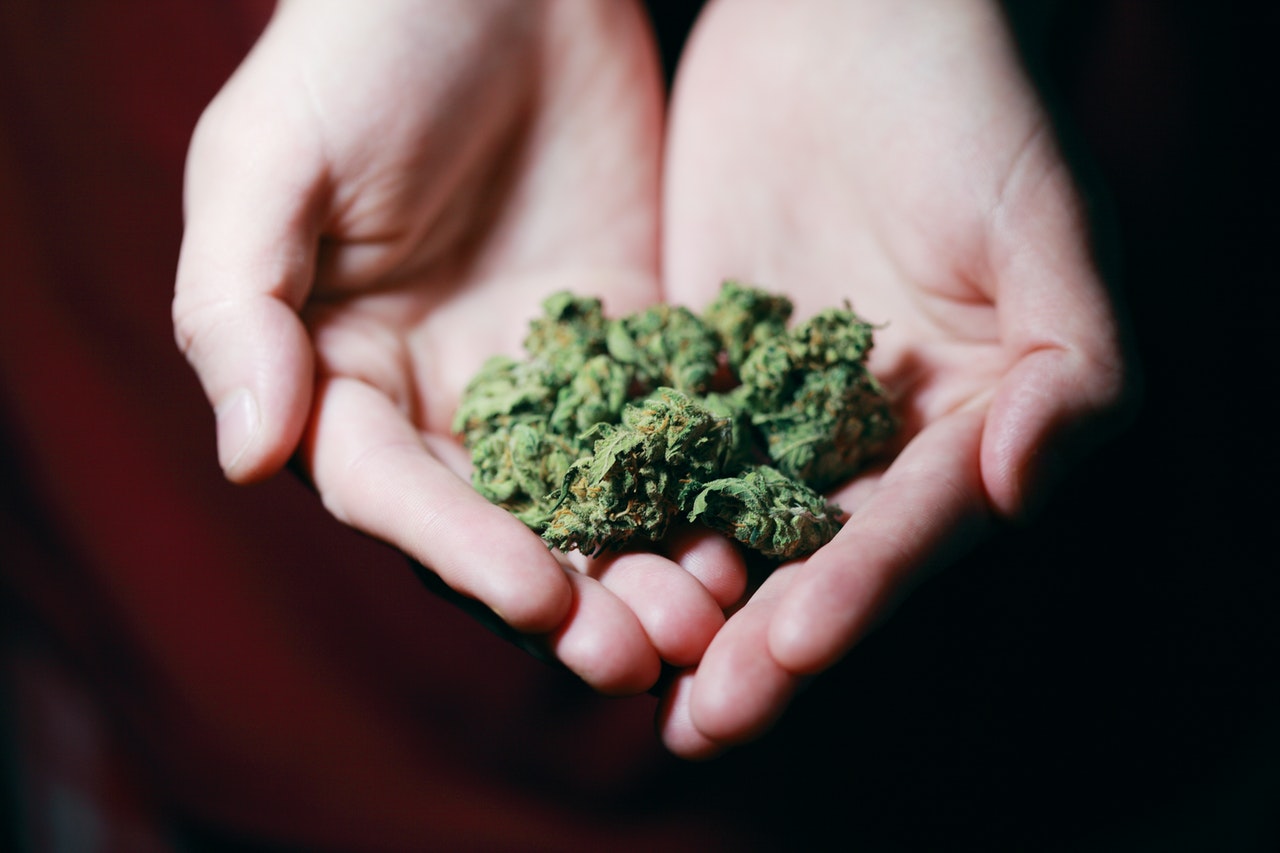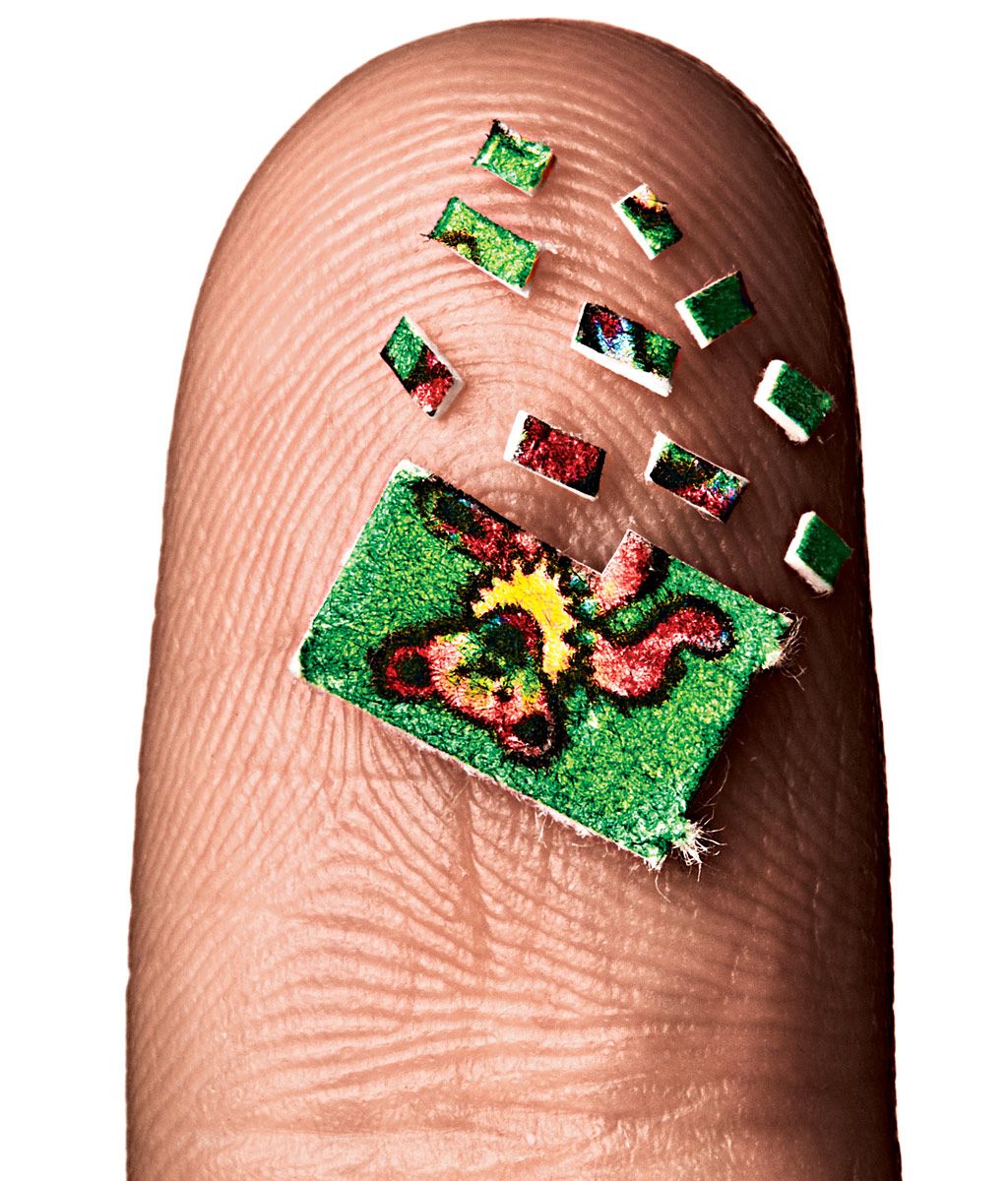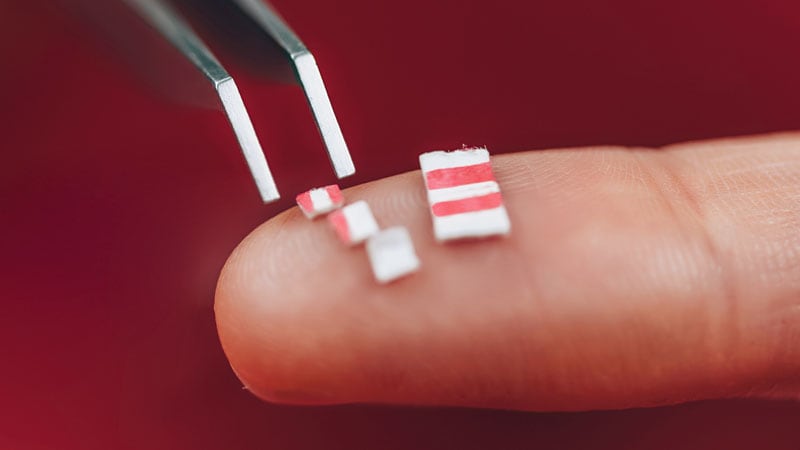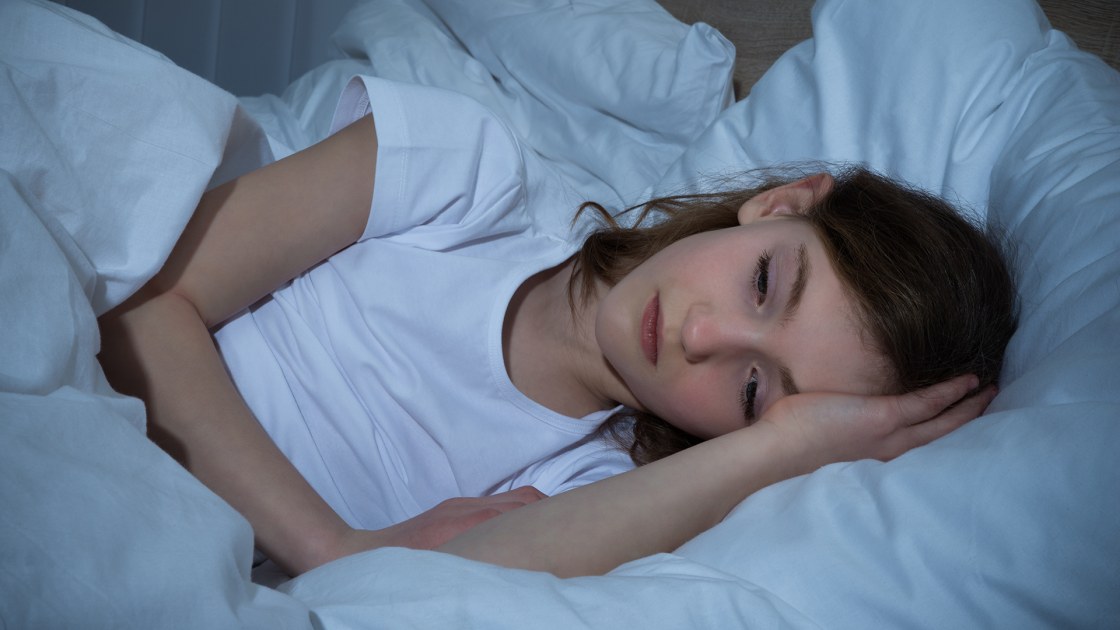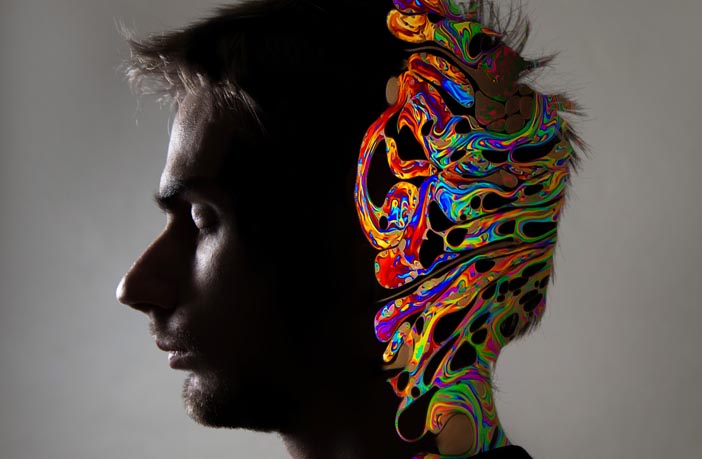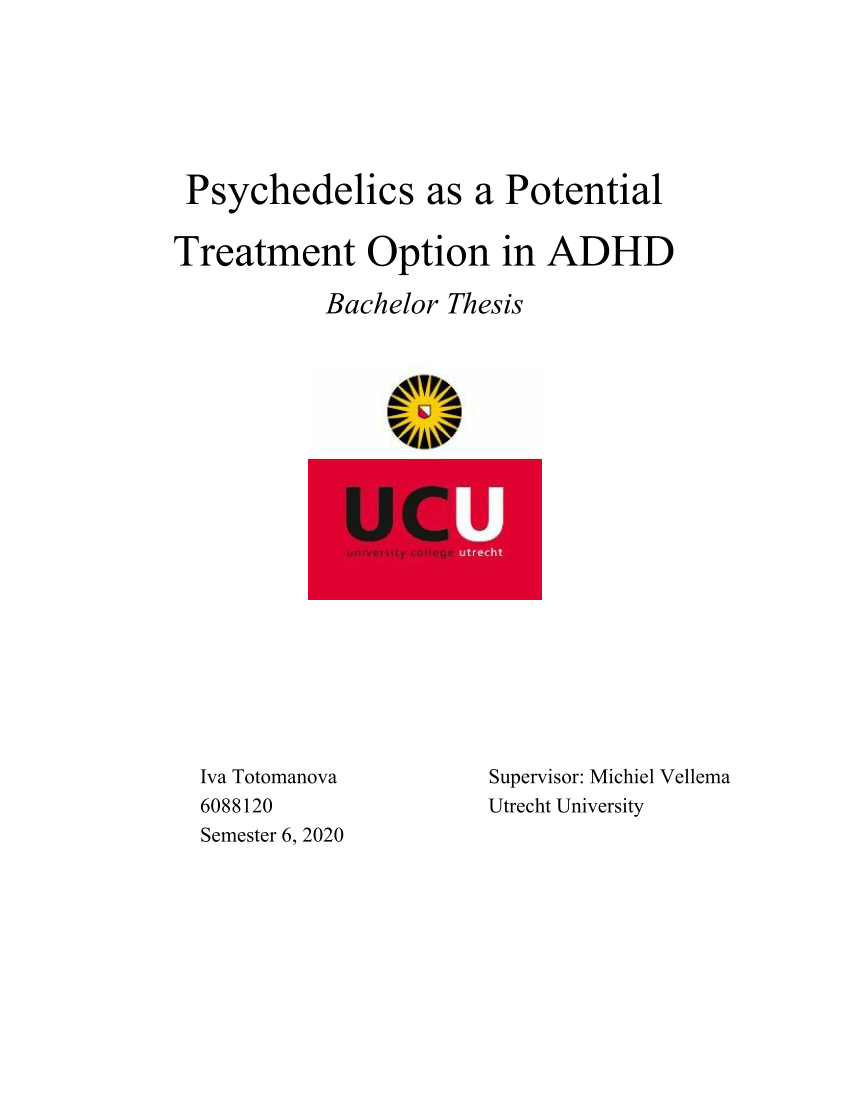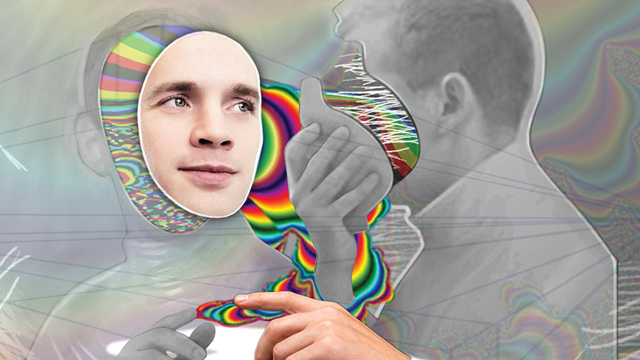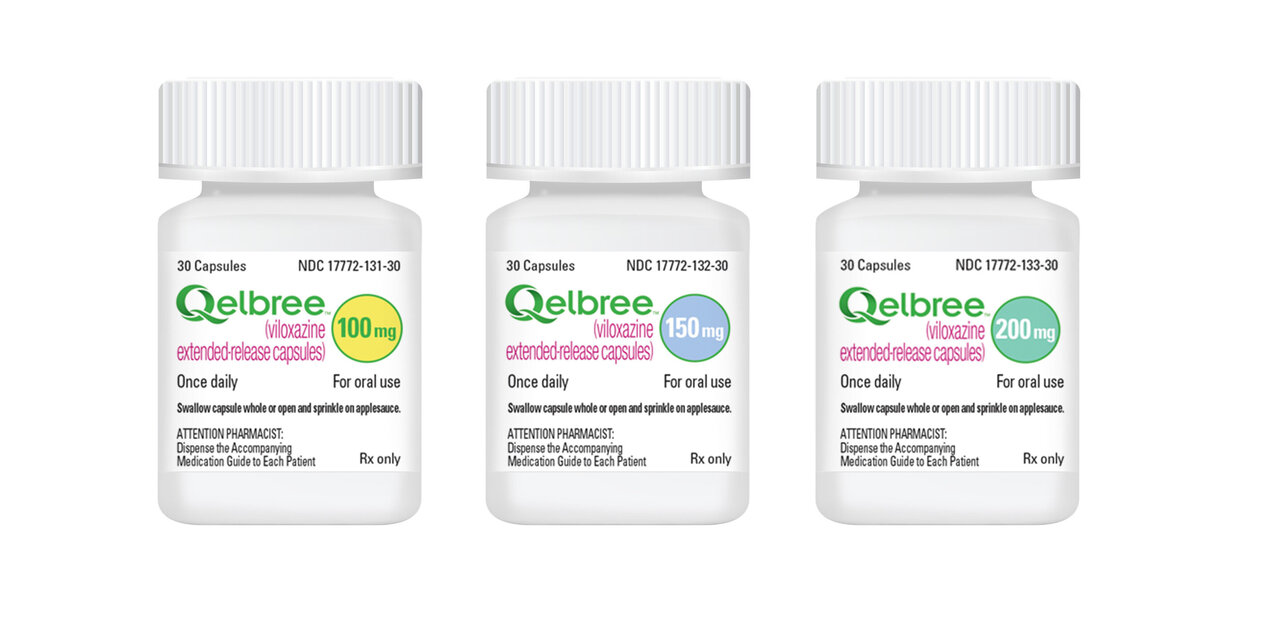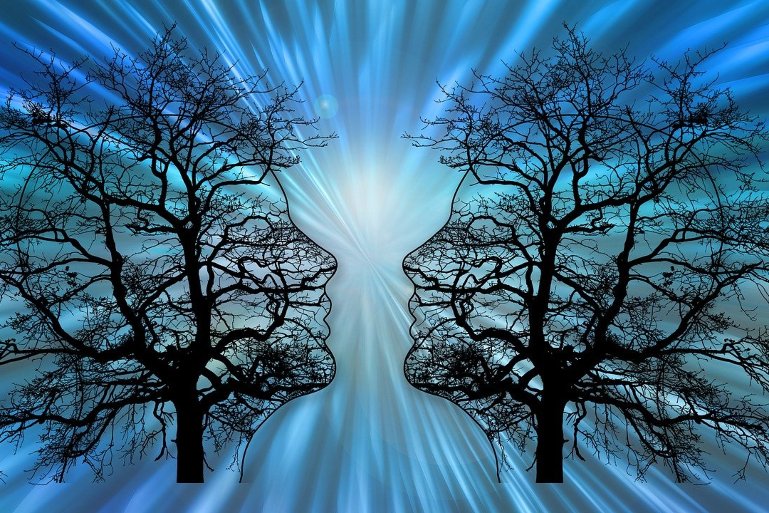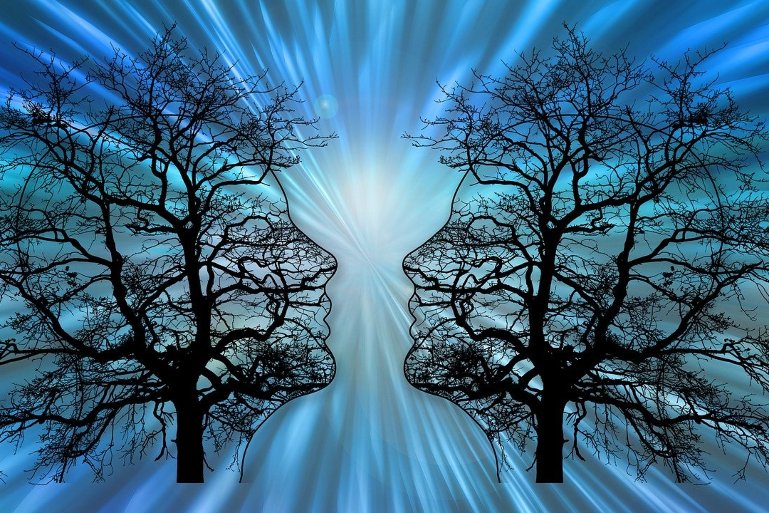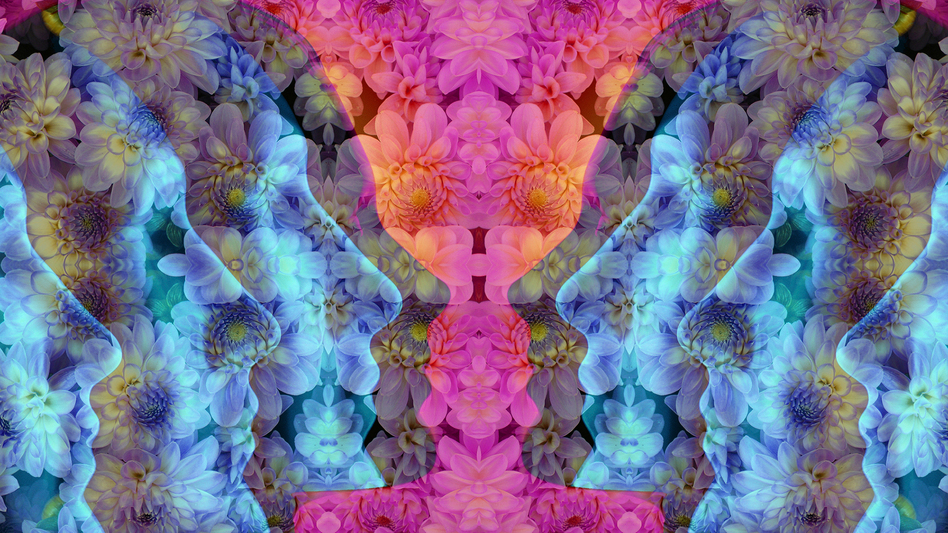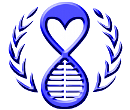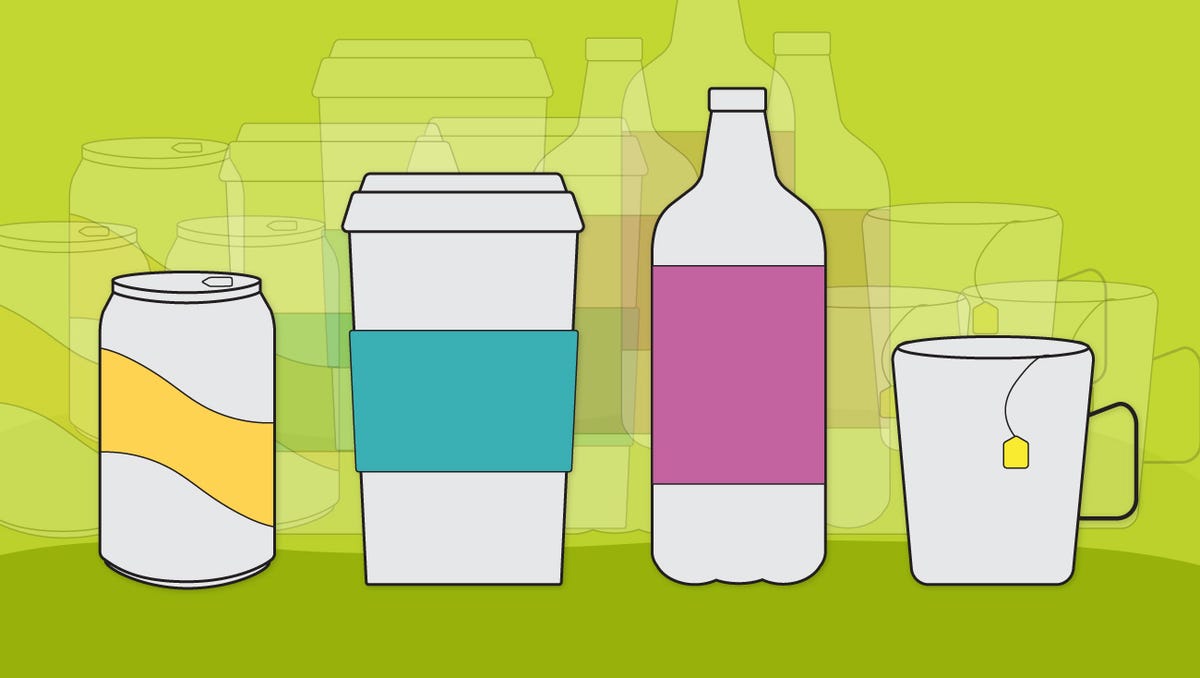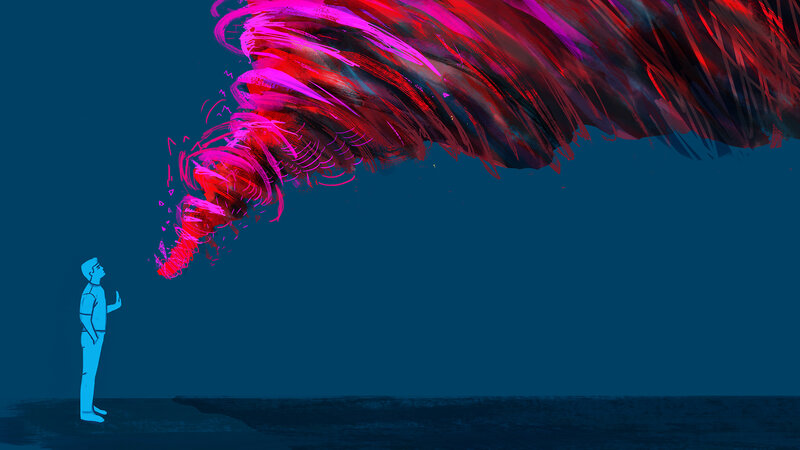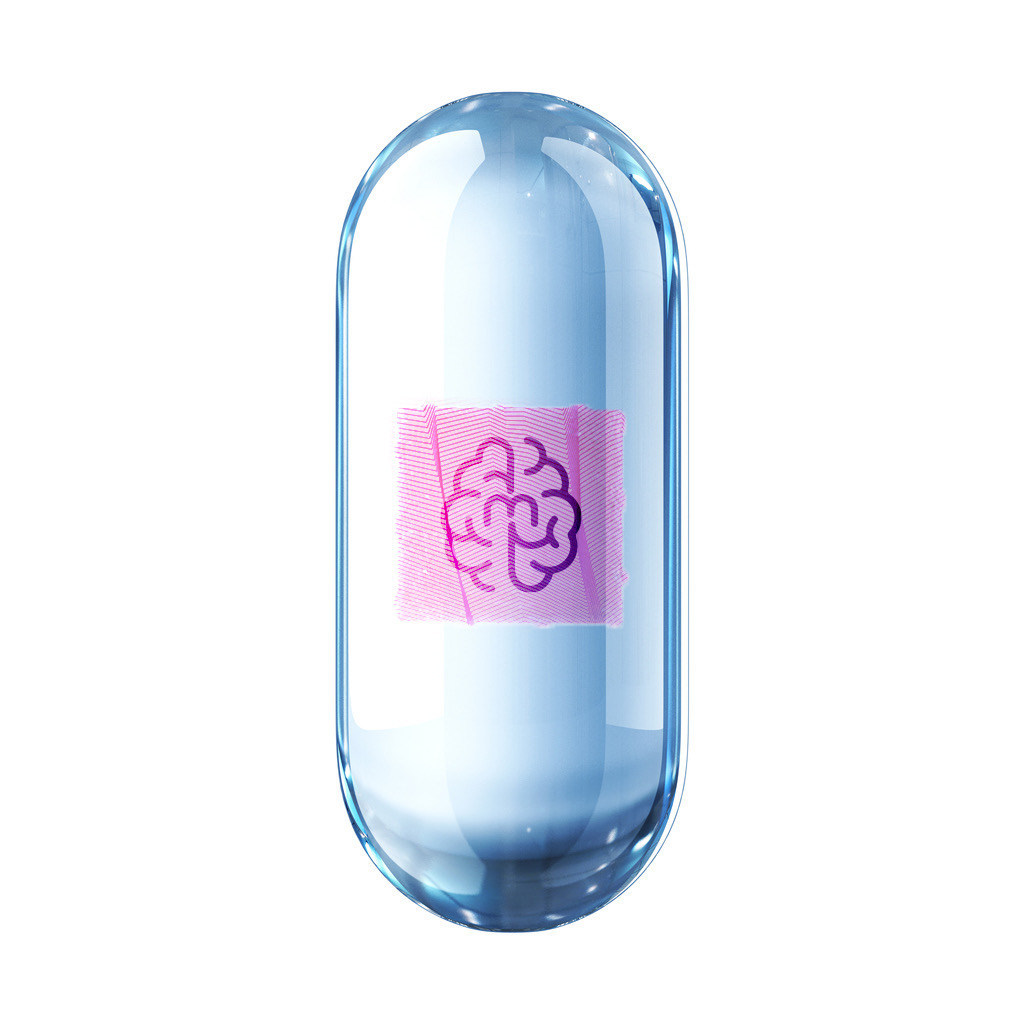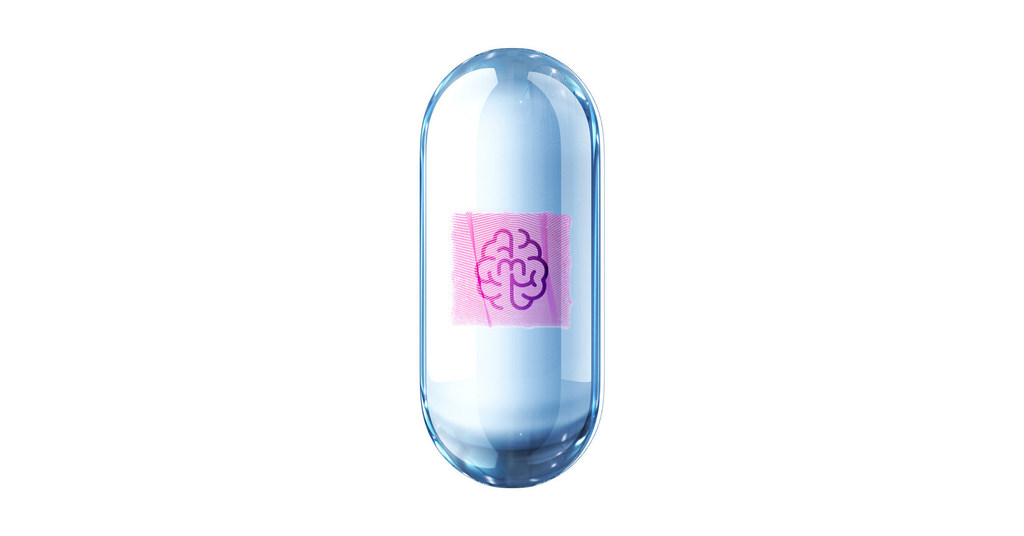Psychedelics as a Potential Treatment Option for ADHD (part 1 of 3)
Thesis by Iva Totomanova | Utrecht University | August 2020
Psychedelic drugs have recently gained popularity among both recreational and scientific communities, and some preliminary research suggests they show promising results when used clinically. Microdosing, which features the use of sub-threshold doses to achieve therapeutic effects rather than a "trip," may also lead to significant improvements in some psychological disorders. One such disorder, which this paper considers in detail, is ADHD-a rather prevalent and persistent dysfunction in attention, impulsivity and excessive motor activity. The aim of the paper is to review the, unfortunately still scant, evidence considering microdosing psychedelics for the treatment of ADHD. Indeed, preliminary evidence points to psychedelic microdosing's beneficial effects on ADHD patients, and even mentions some who have voluntarily and successfully switched their stimulant medication with psychedelic microdoses. The paper also found theoretical matches between dysfunctional neural mechanisms and behavioral manifestations in AHD and the subjective and neural effects of psychedelics. Microdosing these substances may even be safer and possibly more effective than both macrodosing them, and current ADHD medication. The paper concludes that rigorous research on psychedelics' effects on brain and behavior, as well as their application to the treatment of ADHD is warranted, but also necessary to draw any firm conclusions about microdosing's relevance.
Introduction
Attention Deficit Hyperactivity Disorder (ADHD) is one of the most prevalent disorders worldwide, starting around age 5 and continuing well into adulthood. It affects patients’ ability to function efficiently in everyday life, to pay attention and be productive in academic and work settings, and maintain goal-directed motivation. In addition, cognitive disturbances in terms of attention and memory, as well as emotional and mood disruptions, and impulsivity are involved. Current pharmacological medications for ADHD, although effective for addressing the symptoms of the disorder, have a lot of unpleasant side effects which are not always tolerable for all patients. Thus, alternative medications or treatment options are warranted, and the current paper proposes one such option in the face of psychedelic drugs.
The aim of this paper is to compile a review of the possible utilization of psychedelics for the treatment of ADHD. More specifically, the research question this paper will consider is whether psychedelics are a viable treatment option for ADHD and whether microdosing these substances should be considered in this disorder. The paper will focus on one sub-class of psychedelics, called classical psychedelics, which includes LSD, DMT, and psilocybin. It includes research done on all of these classical psychedelics, as they work through almost identical mechanisms in the brain. Because research on the use of psychedelics as a medicine for ADHD is limited, a more indirect route is taken to answer the research question. The paper starts by reviewing ADHD, focusing mainly on its relevant neural and chemical mechanisms, and briefly considers its current treatments, as well as the need for development of new treatment options. Then, it discusses psychedelics as a possible alternative treatment for ADHD, considering possible connections between them in terms of their subjective effects, as well as their mechanisms of action in the brain. The paper argues for a correspondence between the neural deficits experienced by ADHD patients and the brain mechanisms of psychedelic drugs in general. It also considers some research conducted on patients, as well as some of the potential concerns of psychedelic macrodoses. Following the discussion on safety, the paper introduces the concept of psychedelic microdosing as a potentially safer route of administering psychedelics that greatly limits the possible negative outcomes of macrodoses. Finally, the paper discusses some preliminary evidence from microdosing on both healthy participants and ADHD patients, which might suggest a role of these substances in treating the disorder.
Attention Deficit Hyperactivity Disorder (ADHD)
Attention deficit hyperactivity disorder (ADHD) is defined in the Diagnostic and statistical manual of mental disorders as a neurodevelopmental disorder that features
“a persistent pattern of inattention and/or hyperactivity-impulsivity that interferes with functioning or development.” Inattentive symptoms may include having difficulty focusing and maintaining attention on tasks, being easily distracted or forgetful, being neglectful of details and having difficulty organizing work or belongings. On the other hand, hyperactivity-impulsivity can manifest itself as frequent fidgeting, running or climbing, feeling restless and having difficulty staying seated, excessive talking, and frequent interruption of others. The DSM also stresses that in order to be characterized as part of ADHD, the symptoms must directly interfere with one’s social activities or daily functioning at school and/or in the workplace. Symptoms of inattention or impulsivity should not be limited to only one setting, such as only at home or only when surrounded by peers, to exclude any context-dependent causes. In addition, the symptoms presented should not be merely the expression of developmentally normative opposition or inability to carry out or process cognitive tasks. It is also important to note that typically, ADHD is associated with some form of impairment of cognitive or academic performance, learning and memorization, and executive functioning,as well as some delays in cognitive and motor development. However, these should not stem from another learning or mood disorder.
ADHD is a prevalent disorder, and according to the DSM-V, 5% of children and 2.5% of adults suffer from ADHD worldwide. It is important to note however, that despite these estimates, many researchers express their frustration at the DSM criteria for ADHD diagnosis, and blame it as a reason for the underestimation of the prevalence for adult ADHD. Indeed, the disorder typically begins in childhood, with an age of onset between 4 and 7 years of age, and some symptoms must be present before the age of 12 for a formal diagnosis of ADHD. However, despite ADHD being most prevalent amongst children and adolescents, with the symptoms gradually lessening with age, this does not necessarily mean that they disappear altogether and that adults with ADHD are not impaired. In fact, about a third of all children with ADHD maintain the disorder into adulthood. In adults, motor and hyperactivity symptoms are usually not present, however cognitive impairments such as difficulties with planning, attention and impulsivity endure.
Structural brain impairments in ADHD
ADHD is a neurodevelopmental disorder, and its behavioral manifestations are caused by underlying structural deficits in dispersed brain areas, mainly in frontal regions and the basal ganglia. The frontal cortex is mainly involved in higher-order functions such as attention and working memory, learning and motivation, as well as planning and decision-making, which seem to be impaired in ADHD. The basal ganglia, on the other hand, is Mostly involved in behavioral and motor control, as well as in planning and controlling movement and learning, which might contribute to the hyperkinetic and impulsive behaviors seen in ADHD patients. A review of MRI studies in children with ADHD found converging evidence from the literature that children suffering from the disorder have significantly smaller brain volume globally, including reductions in the size of the frontal and prefrontal cortex, and the basal ganglia. Brain volume seems to be correlated with severity of ADHD symptoms, as smaller sizes increase symptoms of inattention or hyperactivity. The prefrontal cortex (PFC) in particular is considered the center for executive control of behavior, cognition and emotion, and is also involved in more complex tasks like reasoning and adhering to social norms. The caudate and the putamen, are also more specifically involved in learning and goal-directed behavior, with the caudate being responsible for more flexible and adaptable behavior, while the putamen plays a role in simpler habits and stimulus-response associations. Impairments in these regions may contribute to the learning and self-control difficulties encountered by ADHD patients. Diffusion tensor imaging (DTI) studies also show structural connectivity abnormalities in white matter tracts in both adults and children. Albeit limited, evidence from DTI studies points to an overall reduction in the volume of white matter in ADHD patients, which can be seen in a wide network of brain areas, including frontal and basal ganglia regions, the PFC and parietal areas. Some researchers also suggest that since white matter abnormalities are mostly seen in neural circuits which usually develop late, this dysfunction in structural connectivity may reflect a maturational delay in ADHD patients, however this idea still needs to be researched more.
In addition, longitudinal studies point to the fact that ADHD features a delay of about 2 to 5 years in structural brain development, especially in the cortical thickness and surface area of frontal and parietal regions, among others. This is presumably connected to the delay in neuronal branching, followed by a delay in pruning and myelination in ADHD. The parietal cortex is involved in sensory processing, as well as in allocating attention to certain sensory stimuli, and spatially localizing them. Impairment of these functions is likely to lead to inattentive or impulsive symptoms, as seen in ADHD patients. Structural deficits in prefrontal cortex and parietal regions seem to persist in adulthood, although basal ganglia abnormalities generally normalize with age. Overall, there appears to be a delay in the maturation and development of the brain in ADHD patients, with some cognitive functions taking longer to develop compared to healthy controls. These “lags” seem most pronounced in frontal regions, which are associated with exerting conscious control over other brain functions, including response inhibition, foresight into the future, and self-regulation. Frontal lobe functions usually develop later in adolescence in healthy people, however in ADHD patients, this “natural lag” is delayed even further, and these important control functions take even longer to fully mature. It has been suggested that structural delays and disruptions in brain circuits in ADHD may be linked to genetic factors involved in the disorder.
Functional brain impairments in ADHD
ADHD also features deficits in relevant neural functions, such as executive functioning, inhibition of response, and motivation to avoid delay. More specifically, ADHD is thought to primarily manifest itself in deficits in the so-called “cool” executive functions, which include response inhibition, maintenance and redirection of attention, and working memory. In contrast to “cool” functions, ADHD also features dysfunctions in “hot” executive functions, including reward processing and motivation. This classification of the deficits suggests that both top-down and bottom-up functions are involved in the disorder, which correspond to the “cool” and “hot” categories of Rubia et al. (2014).
Research suggests that deficits in “cool” functions could be linked to dysfunctions in dispersed areas in the brain, including the frontal and parietal cortex, and the basal ganglia. Attention tasks in adults with ADHD reveal that they seem to engage the left inferior and dorsal prefrontal cortices (PFCs) less strongly than healthy controls. Meta-studies confirm the reduced activity in parietal and prefrontal regions in attentional tasks, and also show lower activity in the posterior basal ganglia. As for working memory tasks, ADHD adults had less activity in the inferior prefrontal and also in parietal regions. Studies on impulsivity via timing tasks point to a decreased activation in the left timing network, which spans the left inferior frontal cortex and left parietal lobe, among others. This study also found that ADHD causes increased activation in the posterior cingulate cortex (PCC), which is part of the brain’s default mode network (DMN). Other researchers also argue for the addition of impairments in the DMN as a specific deficit in ADHD patients. The DMN represents a widely distributed set of interconnected brain regions, including the ventral and dorsal medial PFC, the PCC and the precuneus, which seem to be involved in “doing nothing” and are most active when at rest. Their activity also seems to decrease when performing a task, and thus the DMN is thought to be involved in self-referential thinking and to represent the baseline activity of the brain. In addition, the different brain areas that comprise the DMN play an important role in connecting different cortical regions and thus allow for fast and efficient communication between neurons. Heightened activity in these brain areas is usually associated with negative outcomes, such as depression, anxiety and pessimism, as well as lack of concentration and fewer cognitive resources for carrying out tasks. Increased activity in the DMN in ADHD patients might contribute to excessive mind wandering, and thus, deficits in attention.
“Hot” executive functions, like motivational and reward processing, are thought to represent more “bottom-up” processes and involve different brain regions than “cool” functions - namely, they rely on limbic and paralimbic structures. The limbic system is mainly involved in emotion response and regulation, social cognitions, and memories, especially those associated with emotions. It comprises many distinct brain areas, but those more specifically proposed to be involved in ADHD are the amygdala and its connections to the orbitofrontal cortex (OFC), contributing to the impaired social cognitions and behavior seen in patients. In addition, hippocampal changes in terms of an increased volume, are also present in ADHD patients, and may reflect deficits in memory and learning. Meta-studies confirm that for these types of “hot” functions, both adults and children with ADHD tend to show dysfunctions especially in the striatum, amygdala, and the OFC. Several other functional MRI studies have found lower activation of the ventral striatum in ADHD patients and some ROI research points to the role of the OFC and the limbic system, however these results are not confirmed by whole-brain analyses. Studies on another arguably “hot” function, emotion processing, suggest hyperactivity of the amygdala and left PFC in ADHD patients, however the results in the literature are inconsistent.
Research has also demonstrated that there are differences in functional connectivity in patients with ADHD, Which suggests that rather than having dysfunction in isolated brain areas, ADHD patients have impairments in more widespread networks. During rest, there appears to be reduced communication between hubs of the DMN, especially between the anterior cingulate cortex (ACC) and the PCC. ADHD patients also seem to have reduced functional connectivity both within DMN regions and between the DMN and fronto-parietal circuits. As also mentioned above, dysfunctions in the DMN may contribute to inability to concentrate one’s attention on particular stimuli due to excessive mind wandering. During response inhibition and working memory tasks, there also appears to be reduced activity between regions in the inferior frontal cortex and the basal ganglia, the PFC and ACC, and parietal regions. It is also possible that deficits in functional connectivity in ADHD patients correspond to a maturational lag in brain development, and thus are similar to activity levels seen in younger healthy people. This theory, however, has not been properly researched.
EEG studies report differences in theta and beta brain waves between ADHD and healthy controls. Theta waves are part of the slow-activity of the brain and are seen mostly when one is feeling drowsy, is detached from the external world and is focused inward, while beta waves correspond to a more heightened activation and are present when one is active, attentive, and engaged with external stimuli. A recent review of the ratio between theta and beta waves in the EEG signal (the theta/beta ratio, or TBR) in ADHD patients revealed that even though this may not be a reliable measure for diagnostic purposes, a large proportion of ADHD patients do have problems in their TBR. The review pointed out the numerous studies that have found an increased contribution of theta waves to the EEG signal in children with ADHD, and another EEG study confirmed this and further associated this change in activity with an accompanying decrease in beta activity. Thus, these differences in brain waves may offer an explanation of the ADHD brain as continuously hypoaroused. One of the most popular ADHD medications, methylphenidate, has been shown to specifically decrease the contribution of theta waves to the EEG signal in ADHD patients. In fact, it has been proposed that methylphenidate’s therapeutic efficacy is correlated with how much of a decrease in theta waves there is after administering this medication. Some studies show that the higher the theta activity in a certain subgroup of individuals with ADHD is prior to treatment, the better the clinical response of these people to methylphenidate will be. This may seem paradoxical at first, but suppressing theta waves from cortical areas (signals from which are measured by EEG) which are already involved in inhibition and control of other brain areas, will only increase the inhibition and ultimately result in decreased activity. Moreover, this may be accompanied by an increased voluntary control over behavior, as stimulants support the action of higher-order cortical areas for the control of brain and behavior.
Neurotransmitter systems involved in ADHD
Some research also points to the involvement of dopamine in ADHD and proposes that dopamine dysfunctions play a role in the lack of motivation and reward anticipation seen in ADHD. Indeed, dopamine has important functions in learning and memory, especially as pertaining to motivated goal-directed behavior and learning with reinforcement. More specifically, dopamine acts to “mark” neutral stimuli as important following a rewarded response to them, which in turn enhances motivation for this behavior and is able to create a habit. Dopamine does not only play a role in the learning of associations, but also for memorizing them. Thus, it is possible that any dysfunction in this system would likely cause ADHD-like symptoms. Tripp and Wickens even proposed the so-called dopamine transfer deficit (DTD) theory of ADHD, which proposed that ADHD may arise from an altered sensitivity to reward. According to the theory, in an early learning phase when there is a cue predicting reinforcement for a neutral stimulus, dopamine cells fire in response to the stimulus and this dopamine response is transferred to the cue that predicts this reinforcement. In this way, the person learns to associate the cue with the later reward, so in a later learning phase, dopamine cells would fire in response to the cue only. However, in patients with ADHD, this transfer of the dopamine signaling from the rewarding stimulus to the cue predicting is impaired. This culminates in a delayed reinforcement, leading to difficulty learning. In addition, dopamine also has motor functions, including learning of motor skills, execution of movements and the formation of motor memories. Given the motor symptoms of ADHD, although those are generally decreased in adulthood, psychedelics might be beneficial in relieving excessive movements and hyperkinetic symptoms in patients.
Another monoamine, norepinephrine, has also been implicated in the disorder, and evidence from both animal and human studies point to the possible causal role of norepinephrine in ADHD. Norepinephrine may be involved in motor hyperactivity, attention, and other cognitive mechanisms, so it is conceivable how dysfunctions in this neurotransmitter system can lead to ADHD symptoms. Other research has pointed out the possible involvement of serotonin in ADHD as well. Although there is limited research in serotonin dysfunctions in ADHD, serotonin does have functions in motor activity, impulsivity and attention, for example by attributing an appropriate level of importance to stimuli. Dysfunction in serotonin transporters has been suggested as an underlying cause of some ADHD symptoms. It is also possible that serotonin and dopamine systems interact in ADHD by directly affecting the receptors at the neurons, or indirectly via intermediate neurons.
Treatments for ADHD
The first-line of treatment for ADHD is pharmacological, and usually consists of stimulant medication, such as methylphenidate (Ritalin) or amphetamines (Adderall). These medications are thought to exert their therapeutic effects by blocking dopamine and norepinephrine reuptake and in turn, increasing activity in fronto-striatal regions. Both acute and chronic administration of stimulants seems to be associated with neuroprotection and normalization effects of the activity of the inferior frontal cortex and the striatum. In addition, structural deficits, such as cortical thickness and volume, are also increased through stimulants, which may act to further diminish symptoms. An imaging study using functional MRI compared the effects of methylphenidate on a response inhibition task in ADHD, as compared to healthy participants. ADHD children on methylphenidate showed enhanced behavioral responses, as well as a widespread increase in activation across the left inferior and middle frontal gyrus, the inferior parietal lobule, the ACC, the cerebellum and the caudate nucleus. ADHD adults, on the other hand, did not have increased activation in frontal regions, but still showed increased activity in the caudate nucleus. Interestingly, there was a decrease in activity in ADHD adults compared to controls in the inferior parietal lobule and the middle frontal gyrus. Thus, it appears that methylphenidate is a beneficial medication for children with ADHD, but may not be that effective in adults. This is also supported by the apparent normalization of the TBR in ADHD with increasing age, which seems to be an important factor for the therapeutic efficacy of methylphenidate. Pharmacotherapy, or a combination of pharmacological and psychotherapeutic treatments seems to be the first-line treatment of ADHD in adults. The authors argue that psychostimulant medication can be likened to a “bottom-up” mechanism of treatment, as it targets mainly to symptoms, whereas psychotherapy, for example cognitive behavioral therapy (CBT) is more “top-down”, as it targets underlying functional deficits and requires active participation from the patient. Combining these two approaches provides the patient with a supportive framework in which to explore, identify and work on managing their issues. Stimulant medication also seems to be very effective for short-term treatments and reduce core symptoms of ADHD in about 70% of patients, as well as behavioral responses. Nevertheless, meta-analyses of longitudinal studies have shown poor efficacy of chronic stimulant administration, which is confirmed by neurochemical findings of increased dopamine transporters in these patients. This may lead to the brain adapting to the stimulant medication and eliciting a structural modification of brain areas which were continuously activated by these substances and thus, its beneficial effects may decrease over time. For example, a Multimodal Treatment Study of Children with ADHD showed that after 24 months, ADHD children treated with methylphenidate still showed improvements, but they were smaller than 10 months ago. At 36 months, medication-related differences were no longer evident. However, these differences in effectiveness may have arisen because after the 14th-month mark, the study became observational and participants could choose and manage their own medications. This may have caused a reduction in adherence to and thus, effectiveness of, the treatment. It is also important to keep in mind that stimulants do not cure ADHD, but merely treat the symptoms associated with it, which may lead to long-term use of and dependence on these medications. In addition, treatment with stimulant medication may have unwanted side effects in children, such as loss of appetite, height and weight reductions, sleep problems and insomnia. Less frequently, stimulants may increase blood pressure and heart rate, which in turn might aggravate pre-existing cardiovascular issues. Moreover, suicidal ideation may also be a potential side-effect of pychostimulant medication. Adults seem to show similar adverse effects, including headaches, decrease of appetite and insomnia. In up to 30% of ADHD patients, stimulant medication either does not have the desired effect, or the side effects can not be tolerated. Therefore, although current pharmacological treatments are effective, alternative medications for ADHD are warranted.
PDF | Psychedelic drugs have recently gained popularity among both recreational and scientific communities, and some preliminary research suggests they... | Find, read and cite all the research you need on ResearchGate

www.researchgate.net
Parts 2 & 3 follow below...













